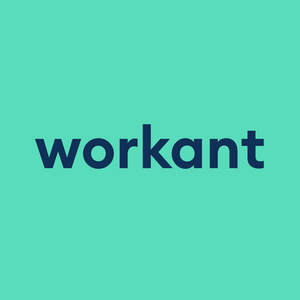What are HR analytics?
HR analytics are “the collection and application of talent data to improve critical talent and business outcomes,” a process focused on using employee data to optimize employee engagement and satisfaction, enhancing organizational productivity, and making better overarching business decisions.
This underutilized tool in our HR toolbox grows more critical every day, and anyone who wants their business to succeed should make HR analytics a priority.
In our current technologically driven, fast-moving and continuously disruptive world, successful HR analytics frameworks give business owners unprecedented insight into employee motivations, satisfaction levels, and strengths/weaknesses.
Never before have business owners, and HR departments had this amount of access to information. These essential facts and figures can be strategically leveraged to enact beneficial changes and produce astonishingly impactful effects. And never before has it been more important to understand your employees than within the current context.
“HR analytics has evolved from a nice-to-have to a must-have for most organizations.”
These fundamental HR analytics processes rely on employee data and statistics. This information serves as the foundation, the accumulated collection of augmented knowledge that can be measured through HR metrics and used to perform analytics activities such as:
● Establishing benchmarks and averages
● Monitoring results and performance
● Determining growth areas
● Pinpointing company-wide trends and issues
HR programs can then be strategically constructed from that framework, leading to increased employee well-being, optimized business practices, and more successful outcomes.
“The goal (of HR analytics) is to turn data into information, and information into insight.”
— Carly Fiorina, former CEO of HP and politician
What are HR metrics?
HR metrics are the key figures, numerical indicators, and crucial employee data points we track to gauge workplace efficiency, performance, and a variety of other statistics relevant to business success; they allow you to determine the effectiveness of HR programs, the current state of your human capital, and the productivity of business operations.
HR metrics and analytics data matter greatly, as they provide a factual foundation for us to interpret and utilize. We can leverage this information to prove or disprove theories, develop massively influential initiatives, and improve our business in all areas.
“Nothing matters unless you can prove it.”
— Greta Roberts, CEO of Talent Analytics Corp.
But you might be wondering… which things are really being measured? What facts, exactly, are we looking at? Where do we get the numbers to develop HR plans, programs, and initiatives?
Your focus should be dynamic, continuously adaptive, and responsive to global changes and your business priorities at any given time, but there are a few standard metrics that you should generally keep an eye on.

11 key essential HR analytics metrics you should be tracking
1. Revenue per employee: total revenue/current number of employees.
2. Employee net promoter score: evaluates customer satisfaction and is comprised of survey-based data determining employees as promoters or detractors: % promoters–% detractors.
3. Human capital risk: includes turnover rate, employee satisfaction, etc.
4. Voluntary turnover rate: (# of employees who voluntarily left the company within a specific time period/average number of employees) x 100.
5. Involuntary turnover rate: (# of employees who involuntarily left the company within a specific time period/average number of employees) x 100.
6. Training efficiency: uses a combination of multiple metrics such as output, customer satisfaction, etc.
7. Offer acceptance rate: the number of accepted offers/number of offers extended by the company.
8. Absenteeism: total # of unplanned absences/total time period x 100.
9. Training expenses per employee: a company’s total training & development expenses/the number of employees within the company receiving training.
10. Time to fill: # of days job positions are open/total # of job positions open.
11. Time to hire: # of days elapsed from the time job is posted until an employee’s first day on the job.
As Peter Drucker famously said, “What gets measured, gets managed.”
Monitoring, tracking, and measuring these key points is important, as you can’t understand what your employees need, what your business would benefit most from, or how to best approach HR analytics and other HR activities without these metrics.

Important things to keep in mind…
Collecting, monitoring, comparing, and evaluating HR metrics takes money, time, and energy away from other business activities, so you’ll want to make sure that you’re spending your resources wisely by strategically opting to prioritize certain metrics.
In his book Strategic Analytics, Alec Levenson writes that the value of metrics lies in “actively choosing things you track because you want to manage your business better.”
Different industries and types of businesses require a pinpointed focus on certain metrics; for some types of businesses, there are metrics that won’t be relevant.
For example, HR teams in the retail industry might pay close attention to voluntary turnover and absenteeism rates, but management for a startup tech company may fixate on offer acceptance rate and employee net promoter scores.
Your focus should largely depend on your business’ size, goals, structure, HR framework, and mission. But no matter the industry, it’s essential to holistically interpret, analyze, and evaluate these metrics within the greater context before integrating your findings and implementing them throughout any organization.
Remember that the aim of HR analytics is to make better business decisions, so you should choose to collect and analyze the information that will:
● Give you the deepest insights.
● Produce the most optimal return on investment.
● Help you to help your business.
If you aren’t confident in your ability to do this, hire experts and invest in powerful HR software that can help you with this process.
Which metrics are most important today?
As aforementioned, the essential metrics for you depend on many factors. But as a result of the Covid pandemic, the “Great Resignation,” and the overarchingly chaotic state of global enterprise, certain aspects of HR analytics shine through as clearly important across most industries.
Metrics such as recruitment and retention stats should be attended to, as good labor is hard to come by in our current economy. The post-recession days of employees begging for jobs are long gone, and it’s more important than ever to pay close attention to turnover and offer acceptance numbers.
For the same reasons, along with the evolving relationship young workers have with their jobs, employee well-being is arguably the single most important metric to track in any industry. People work differently now and yearn for a different work-life balance along with a more robust sense of purpose. These shifts in employee mindsets and the state of enterprise make it more imperative than ever before to monitor holistic employee wellness and engagement, ensure team satisfaction, and continuously improve the employee experience.
Diversity, equality, and inclusion stats and data are also significantly more pressing within the context of our current climate. Neglecting DEI metrics would be a big mistake, and capitalizing on them can provide awe-inspiring opportunities for underrepresented groups and your organization.
What can I do to start measuring HR metrics innovatively?
If you don’t have a complete plan in place, get one soon. Sit down with your team, ask questions, identify goals, and strategically choose the right areas to focus on. Utilize the internet, leverage automated tools for data collection, and consider adopting a comprehensive HR analytics platform to centralize your HR metrics activities.
Don’t miss out on the myriad of opportunities provided by HR metrics and data. Optimize your HR analytics framework before your competitors do.

